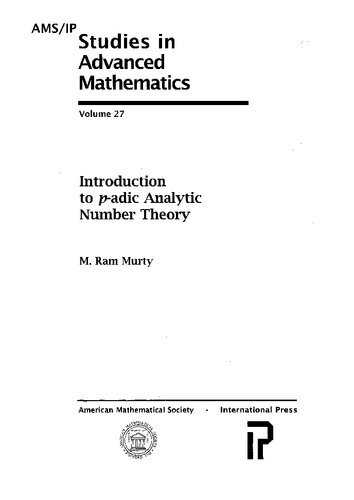

Most ebook files are in PDF format, so you can easily read them using various software such as Foxit Reader or directly on the Google Chrome browser.
Some ebook files are released by publishers in other formats such as .awz, .mobi, .epub, .fb2, etc. You may need to install specific software to read these formats on mobile/PC, such as Calibre.
Please read the tutorial at this link: https://ebookbell.com/faq
We offer FREE conversion to the popular formats you request; however, this may take some time. Therefore, right after payment, please email us, and we will try to provide the service as quickly as possible.
For some exceptional file formats or broken links (if any), please refrain from opening any disputes. Instead, email us first, and we will try to assist within a maximum of 6 hours.
EbookBell Team

0.0
0 reviewsThe main focus of the book is the study of $p$-adic $L$-functions and their analytic properties. It begins with a basic introduction to Bernoulli numbers and continues with establishing the Kummer congruences. These congruences are then used to construct the $p$-adic analog of the Riemann zeta function and $p$-adic analogs of Dirichlet's $L$-functions. Featured is a chapter on how to apply the theory of Newton polygons to determine Galois groups of polynomials over the rational number field. As motivation for further study, the final chapter introduces Iwasawa theory.
The book treats the subject informally, making the text accessible to non-experts. It would make a nice independent text for a course geared toward advanced undergraduates through beginning graduate students.